29.9" on the ground as of Feb. 2, 2010.
13" on the ground at KMSP.
50.6" snow since December 1.

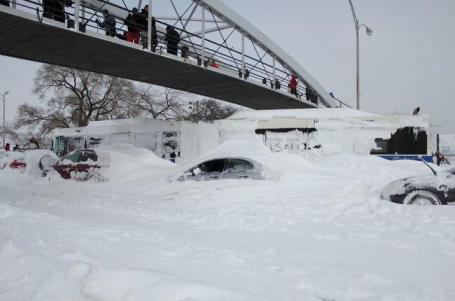
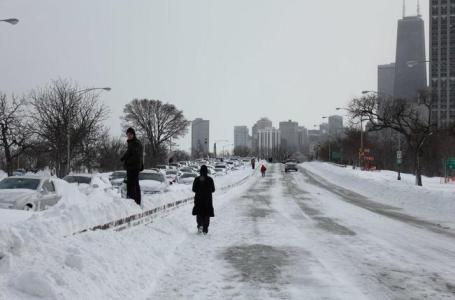
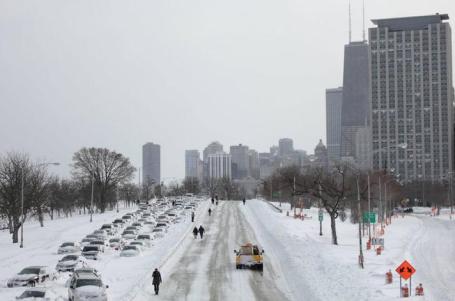

Chicago: The World's Biggest Parking Lot. Thanks to Jason Parkin for sharing some incredible photos of the aftermath of the Great Chicago Blizzard of '11. I've never seen anything quite like this.
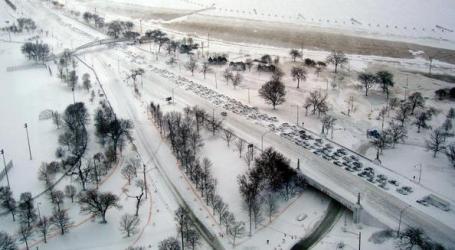
Chicago Humbled By Powerful Storm. A good overview from a 1-in-20-year snowstorm rom the New York Times: "Chicago, a city that prides itself on its ability to conquer any snowstorm that comes its way, woke up Wednesday to discover that hundreds of people had been trapped for hours — scared and confused, in part because of the vague advice they heard from emergency workers — along a prominent roadway that runs smack through the heart of the city. Among the scenes described by those who spent most or all of the harrowing night on Lake Shore Drive: Frustrated drivers trying to unclog the roads by pushing stuck and abandoned cars through snow-filled exit ramps; a band of passengers crowded inside one Chicago Transit Authority bus — an express, of course — deciding after five hours to make a run for it (many were forced to turn back); people who ventured out, perhaps from their homes along Lake Shore Drive, to deliver cereal bars, water and Gatorade to those stranded."
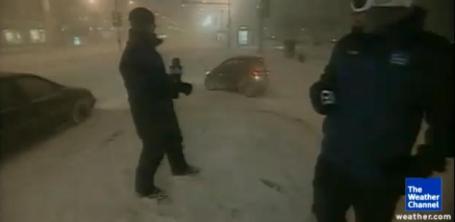
Jim Cantore Freaks Out During Chicago Thunder-Snow. In defense of Jim - it was a pretty dramatic moment. Winds gusting to 70 mph - horizontal snow dropping visibilities - and then a zap of cloud to ground lightning lighting up the sky with a roar of thunder. It must have looked like the (snowy) end of the world. From Jodi Hill at examiner.com: "Jim Cantore knows weather. The Weather Channel meteorologist Jim Cantore has a video going viral of him responding crazy to a Thundersnow moment on Tuesday night covering the Chicago Blizzard on the cable channel. The winter thundersnow was definitely a rare kind of thunderstorm with snow falling as the primary precipitation instead of rain and lightning in the area as well.
“Oh J****, Listen to that. Son of a….,” says Cantore who seems so shocked that the thundersnow is right above the Weather camera crew that he has shares it in short exclamations. “That's believable! Oh my goodness. Holy Smoke. Just Incredible.”
The January Blizzard of 2011 virtually crippled the Chicago, Illinois area as the residents of the area were digging out of feet and not inches of snow. While the snow stopped on Wednesday the cleanup continued and people were glad to see the precipitation end."
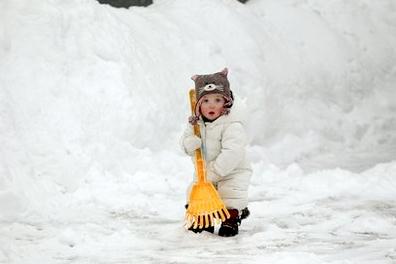


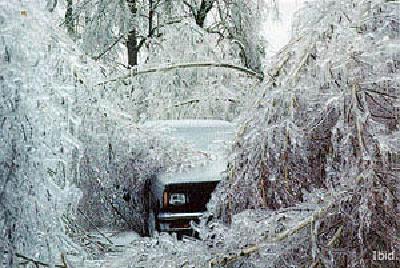
* Difference between a Winter Storm Watch and a Winter Storm Warning? How is a Windchill Advisory different from a Windchill Warning? USA Today has a useful glossary of winter weather terminology here.
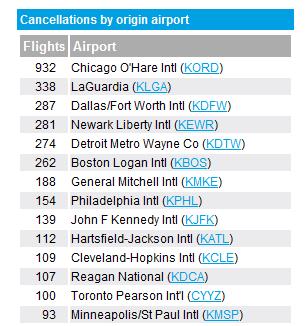


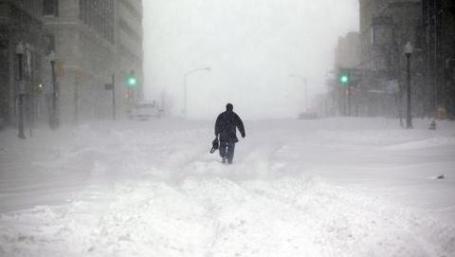
Other notable records so far:
•Tuesday's snowfall of 13.2 inches was the greatest one-day snowfall ever recorded in Tulsa, where records date to 1900. The 11 inches of snow that fell in just 12 hours in Oklahoma City was more than the city usually sees in an entire year."
• Dallas Fort Worth International Airport was closed for several hours Tuesday, the first time in five years the airport shut down because of weather. Temperatures that plummeted into the teens in Dallas were the coldest the city has seen in 15 years, the weather service reported.
•So far this winter, Atlanta has received 5.9 inches of snow, which is more than four times the city's average of 1.3 inches.
•A total of 57 inches of snow fell in Hartford, Conn., in January, the city's snowiest month ever. Records in Hartford go back to 1905.
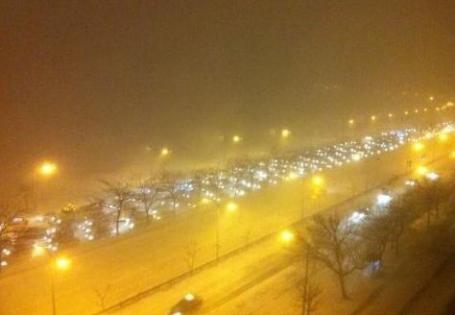

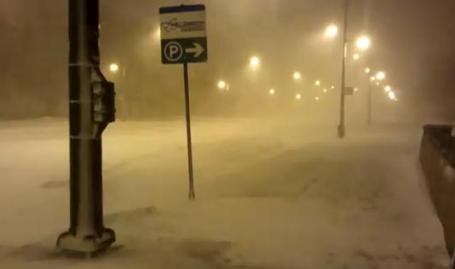
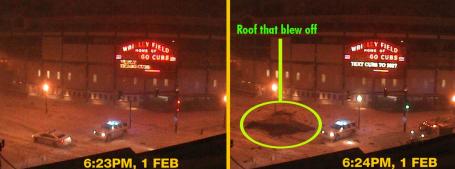

The Big Dump. That's YouTube footage of Simon Walker from AndroidSPIN, snowblowing his driveway in Chicago. At least report 20.5", just shy of the all-time record of 23", set in 1967. Right now it's Chicago's third greatest snowfall from a single storm since the last 1800s.
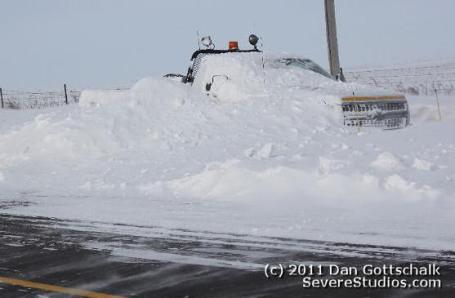
Snow-Power > Ram-Power. I think there's a 4x4 somewhere under than 6 foot drift west of Cedar Rapids on Highway 30 Wednesday morning, courtesy of Dan Gottschalk from Severe Studios.
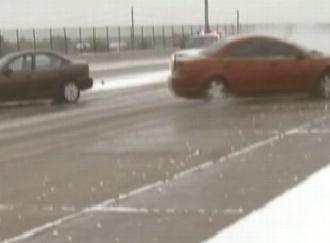
Drive Safe! Winter Weather Driving Tips For Tackling The Snow & Ice. ABC News has a timely article with a few friendly reminders (on ways to avoid having to make a frantic call to your car insurance company):
"Americans may be winter weary, but they are bearing the brunt of yet another severe winter storm -- an enormous system that's expected to cover at least one-third of the country with snow, ice and rain. February may not bring any relief. So what can you do if you absolutely have to drive when the weather is bad and roads are slick, snow-covered and downright dangerous? Mark Cox of the Bridgestone Winter Driving School in Colorado Springs, Colo., appeared on "Good Morning America" to share safe driving tips for when you have to be out in winter's worst.
Safe Driving Tips
 Avoid the Phantom Shoulder: When a road grader or truck plows, it pushes snow to one side of the road. That snow can often appear to be an extension of the road – like a very wide shoulder – but often it's is just covering a ditch or drop-off, Cox said. If you get a wheel in that ditch, your car could go off the road. If you have to pull over, slow down first and ease over slowly. If you start to feel the car sinking, you can pull away, Cox said."
Avoid the Phantom Shoulder: When a road grader or truck plows, it pushes snow to one side of the road. That snow can often appear to be an extension of the road – like a very wide shoulder – but often it's is just covering a ditch or drop-off, Cox said. If you get a wheel in that ditch, your car could go off the road. If you have to pull over, slow down first and ease over slowly. If you start to feel the car sinking, you can pull away, Cox said."
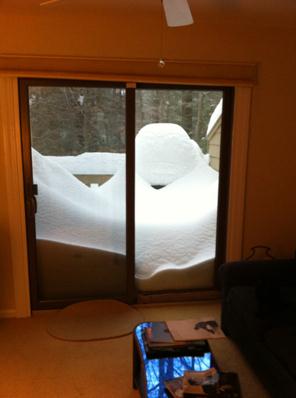

Wednesday Windchills. Yes, in spite of the 4-5" snow that fell Monday, and the painful windchills yesterday, we still got the better end of this week's super-storm. Click here for more details and snow amounts from the National Weather Service.


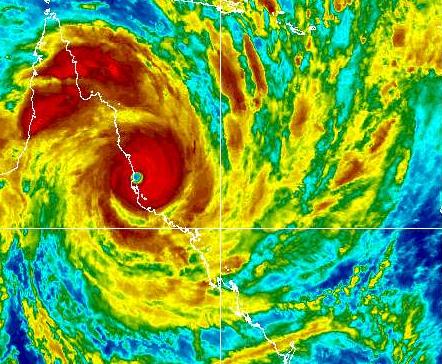
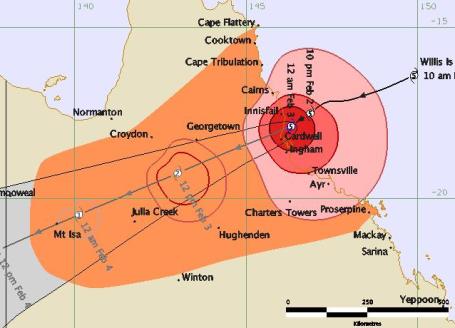

Some Scientists Believe Extreme Weather Events Becoming The Norm. The Kansas City attempts to connect the dots with a story focused on the recent spike in severe weather events, random, or part of a larger (global) pattern? "Just in December, some forecasters thought our mild winter would continue and we’d cruise through with only a handful of storms. So what happened? Climate change, according to many scientists. Not a sudden change in the climate but a gradual change bringing us a pattern of extreme weather events. And although the atmosphere is warming, that doesn’t mean snowstorms will stop anytime soon, said Charles Rice, a Kansas State University professor and climate change author. That’s because the warmer air means more moisture, in the short term at least. “Climate change doesn’t mean you are not going to have cold spells and snow,” Rice said Tuesday. “It’s a change in the weather pattern, the intensity of a weather event — all those come into play.” Indeed, scientists said extreme weather events were becoming the norm."


January 2011 Global Weather Extremes Summary. From Jeff Masters and his Wunderblog: "Another month of wild weather from around the world has just passed. Highlights include extraordinary snowfall in the Eastern portion of the U.S.A., record floods in Australia, Brazil, and Sri Lanka and record cold in Korea, Manchuria, and Japan. NORTH AMERICA: The biggest story of the month for the United States was a series of tremendous snowstorms in the Mid-Atlantic States and Southern New England. A storm on January 11-12 broke Hartford, Connecticut’s all-time 24-hour snowfall with a 24.0” accumulation. Unofficial amounts of up to 30.5” were reported from the New Haven area. On January 26-27 another blizzard deposited 19.1” in Central Park, New York City, its 8th greatest snowstorm on record and the 3rd top-ten snowfall in just the past year (Central Park has 142 years of records). Overall, this was the single snowiest month on record for Hartford: 57.0” (old record 45.3” in Dec. 1945), New Haven: 56.6” (old record 46.3” in Feb. 1934), and Newark, NJ: 37.4” (old record 33.4” in Jan. 1994). It was New York City’s 2nd snowiest month with a 36.0” total (snowiest month was just last February with 36.9”!)."
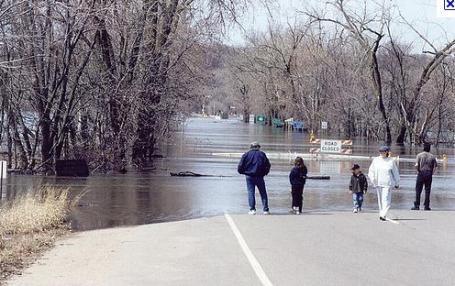
Growing Potential For River Flooding This Spring. I'm not the only one concerned about an escalating risk of flooding in 40-60 days. Here's the latest from Greg Spoden at the Minnesota State Climatology Office:
- There are several factors pointing towards major spring flooding for many of Minnesota's rivers and streams. Projections for many Minnesota river communities indicate a greater than 60 percent probability of major flooding. The probability of major flooding exceeds 80 percent at some locations and the possibility of record flooding exists for some locales.
- January 2011 precipitation totals were near, to somewhat above, historical averages in nearly all Minnesota counties. While January 2011 was not newsworthy for major winter storms, it was notable for a very large number of snowfall events. For example, the Twin Cities reported only four days during January without at least a trace of snowfall.
- Many Minnesota counties report more than 16 inches of snow cover as of this writing. Snow depths for portions of west central Minnesota, and all of northeastern Minnesota, exceed 24 inches. For numerous Minnesota locations, snow depths rank in the top 20th percentile.


Apple's Greatest Hits Under Steve Jobs. From Computerworld and yourversion.com, running down some of the innovations in 20+ years at Apple: "Here is Computerworld's list of the 12 most notable hits Apple has produced under CEO Steve Jobs, from his first tenure (1977-85) to his successful return from 1997 to today. These weren't always the biggest sellers or the best-designed, but they made a splash when they were unveiled and often pointed the direction for the rest of the computer industry. With Jobs now out on another medical leave, we thought it a good time to look at the innovation that has been the hallmark of his leadership.
Apple II Forever
The Apple II was the first product released from Apple Computer Inc. after incorporation in 1977. Unlike the Apple-1, this computer came with a monitor, keyboard, case and power supply, making it a machine for the masses, not just homebrew hackers. More than eight models and five million units were sold before it was discontinued in 1993."(there are 12 more in this afticle).

Invisibility Cloak Enters The Real World. I love it when science fiction gets one step closer to becoming the latest technological innovation (landing on the moon was considered science fiction until the late 50s). A story from the U.K.'s Telegraph: "In the past researchers have only been able to "cloak" microscopic objects using extremely complicated physics and so-called meta-materials made on a tiny scale. But a new study at the University of Birmingham has taken a massive step forward by making a paper clip invisible – an object thousands of times bigger than previous experiments. The research works by using a naturally forming crystal called calcite which has extraordinary light bending abilities. By placing the crystals over an object it "bounces" light around it rendering it totally invisible to the naked eye. Dr Shuang Zhang, a physicist and lead investigator from the University of Birmingham, said: ‘‘This is a huge step forward as, for the first time, the cloaking area is rendered at a size that is big enough for the observer to ‘see’ the invisible object with the naked eye."

Texting Made Easy (for anyone over the age of 50, myself included). Suddenly all those strange letters on my cell phone screen make sense! Oh, how I long for the days of my old, rotary phone. Rated PG, for pretty gross (but kind of funny). If you're easily offended or capable of taking this personally please skip over this part.
TEXTING FOR SENIORS
Since more and more Seniors are texting and tweeting there appears to be a need for a STC (Senior Texting Code). If you qualify for Senior Discounts this is the code for you: Please pass this on to your CHILDREN and Grandchildren so they can understand your texts.
ATD: At The Doctor's
BFF: Best Friend Farted
BTW: Bring The Wheelchair
BYOT: Bring Your Own Teeth
CBM: Covered By Medicare
CGU: Can't get up
CUATSC: See You At The Senior Center
DWI: Driving While Incontinent
CBM: Covered By Medicare
CGU: Can't get up
CUATSC: See You At The Senior Center
DWI: Driving While Incontinent
FWB: Friend With Beta Blockers
FWIW: Forgot Where I Was
FYI: Found Your Insulin
FWIW: Forgot Where I Was
FYI: Found Your Insulin
GGPBL: Gotta Go, Pacemaker Battery Low!
GHA: Got Heartburn Again
HGBM: Had Good Bowel Movement
GHA: Got Heartburn Again
HGBM: Had Good Bowel Movement
IMHO: Is My Hearing-Aid On?
LMDO: Laughing My Dentures Out
LOL: Living On Lipitor
LMDO: Laughing My Dentures Out
LOL: Living On Lipitor
LWO: Lawrence Welk's On
OMMR: On My Massage Recliner
OMSG: Oh My! Sorry, Gas.
OMMR: On My Massage Recliner
OMSG: Oh My! Sorry, Gas.
PIMP: Pooped in my pants
ROFL... CGU: Rolling On The Floor Laughing... And Can't Get Up
ROFL... CGU: Rolling On The Floor Laughing... And Can't Get Up
SGGP: Sorry, Gotta Go Poop
TTYL: Talk To You Louder
WAITT: Who Am I Talking To?
TTYL: Talk To You Louder
WAITT: Who Am I Talking To?
WTFA: Wet The Furniture Again
WTP: Where's The Prunes?
WTP: Where's The Prunes?
WWNO: Walker Wheels Need Oil
GLKI (Gotta Go, Laxative Kicking In)
GLKI (Gotta Go, Laxative Kicking In)
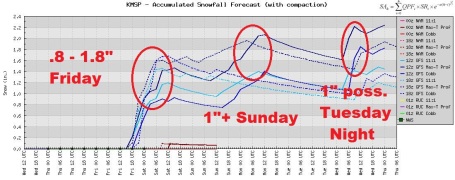
65" By The Middle Of Next Week? No major, Chicago-style monster snows are brewing, just a few (minor) clippers. We may pick up a quick, slushy inch late Friday, again Sunday night and Tuesday as colder air invades Minnesota. It won't be as cold as January, but temperatures trend well below average for at least the next week or so.
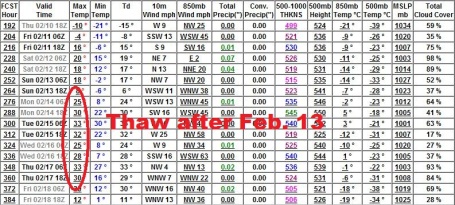
Signs Of Hope. The 00z model runs of the GFS weather model have been hinting at a prolonged stretch of 20s and low 30s after Feb. 13 or so. Not exactly spring fever material, but a step in the right direction. We've picked up 63 minutes of additional daylight since December 21 - that higher sun angle (twilight at 6:30 pm!) will make it harder to experience subzero daytime highs - and take the edge off our nighttime lows in the coming weeks. Yes, within a few weeks we'll pull out of the deep freeze. I stand by my earlier prediction: the worst of winter is behind us (looking at sheer duration of subzero weather). More cold fronts? Absolutely, but it will be harder to sustain day after day of subzero weather as we sail into mid and late February.


Coldest Day Of The Week. Wednesday was numbing alright, a bright sun couldn't lure the mercury above 2 in Alexandria, 9 in St. Cloud, and a nippy 12 in the Twin Cities (12 degrees below average for Feb. 2). Breaking news: it didn't snow.

History Of Groundhog Day. How on Earth didn't Punxatawney Phil see his shadow? Personally, I think there's a cover-up here. In fact I'm not only skeptical, I'm a denier. I'm a groundhog-day-denier, and until I see irrefutable evidence that Phil did not see his shadow, I will keep the volume turned up on Fox News and mind my own business. Personally, I think Al Gore had something to do with this. The history of groundhog day from National Geographic is here.
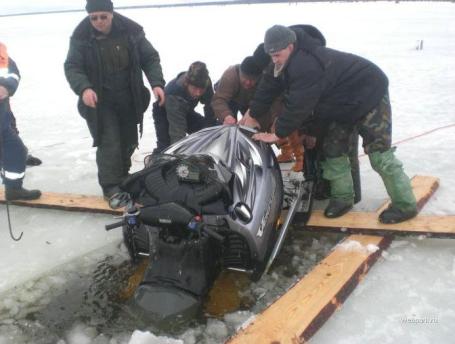
Paul's Conservation Minnesota Outlook for the Twin Cities and all of Minnesota:
TODAY: Partly sunny, stiff breeze. Winds: SW 10-20. High: 20
THURSDAY NIGHT: Clouds increase, not as cold. Low: 14
FRIDAY: "Milder", coating to 1" late in the day and at night, slushy roads possible. High: near 30
SATURDAY: Lingering flurries, still "mild". High: 32
SUNDAY: Turning colder, light snow late, maybe a coating to 1". High: 28
MONDAY: Light snow tapers to flurries - sun comes out, numbing again. High: 12
TUESDAY: Patchy clouds, few flakes? Low: -5. High: 9
WEDNESDAY: Clouds increase, still cold. Low: -4. High: 7

The End Is Near
Don't watch CNN before trying to fall asleep. Riots, floods, historic snowstorms, the cyclone that just hit Australia was almost twice the size of "Katrina". The only thing missing is plagues of locust, and that may show up on Doppler any day now. When there's no 7th day on my 7-Day Outlook, that's when it's time to head for the hills.
The reality? Weather has always been severe, sometimes extreme and news-worthy. With YouTube, Twitter and real-time global communications we're doing a better job of finding and reporting on crazy weather that's been there since the beginning of time.
Is a 4% spike in water vapor floating overhead increasing the odds of massive storms? Probably. But (as always), the truth is probably more complicated. The sky is not falling, in fact, the atmosphereover Minnesota will be warming to near freezing later this week. Let the good times roll! 32 F. Here in the Land of Low Weather Expectations, after the (real) winter we've endured, that sounds pretty good. Snow? 1/2-2" possible late Friday, maybe another inch late Sunday, but no headline-grabbing storms for Minnesota. The groundhog is predicting an early spring. Hmm. Don't see it. Hope he's right.


Fox News Columnist Seeks Sources To Scoff At Global Warming. A story from gawker.com: Fox News Science Columnist Gene Koprowski has a long history of standing up against this "global warming" foolishness. Today, he's seeking sources to to explain the "ridiculousness" of the idea of global warming causing snow. Can you imagine?
Koprowski posted this request to Profnet, the service that brings together desperate journalists and publicity-hungry sources:
1. ENVIRONMENT/TODAY: Global Warming Causing More Snow? Come Again? — FoxNews.com
Deadline: Feb 01, 2011 11:00 PM EST
Former Vice President Al Gore told Bill O'Reilly that: "A rise in global temperature can create all sorts of havoc, ranging from hotter dry spells to colder winters, along with increasingly violent storms, flooding, forest fires and loss of endangered species." We need comments from someone who can point out the ridiculousness of his argument, even if you accept the somewhat-implausible argument. I've been assigned this story just now by Fox News in New York for the science and technology desk. I'm looking for comments. Please send comments via e-mail. Please send your name, title and company you represent. Please send comments by 10 p.m. CST. Contact: Gene Koprowski, [redacted]


No comments:
Post a Comment